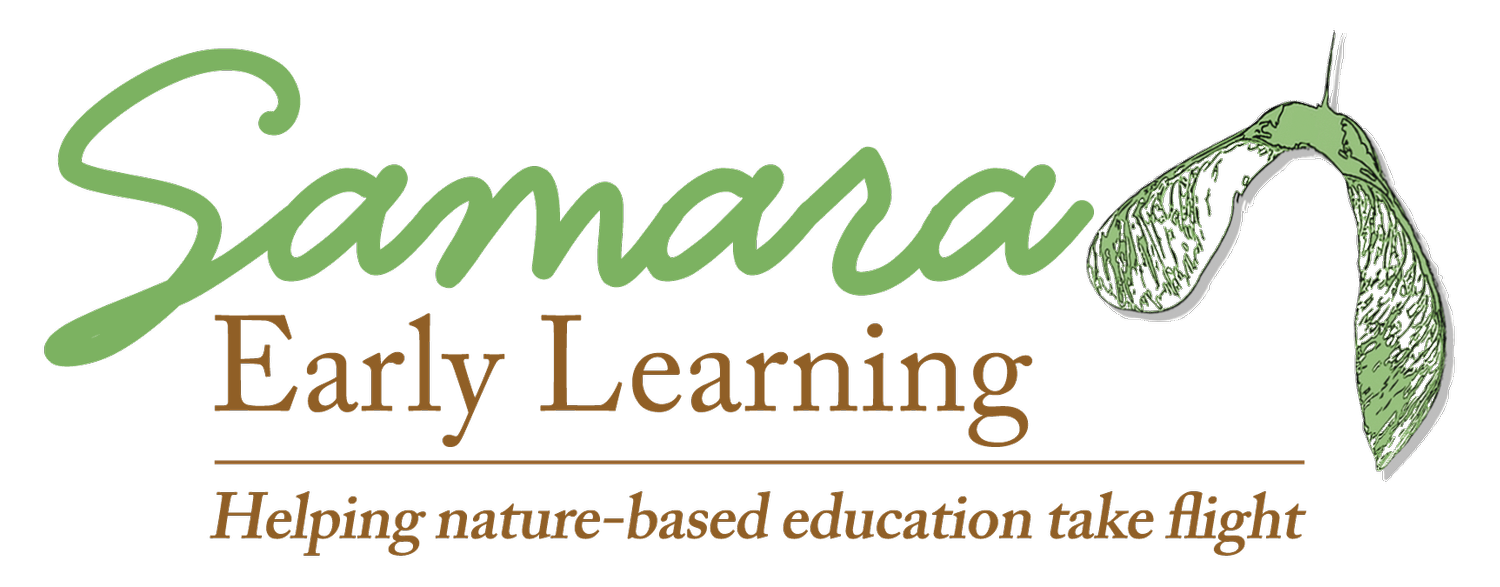Connecting the learning across all three spaces
This post originally appeared in Dr. Rachel A. Larimore’s weekly Samara newsletter on August 29, 2023. If you’re interested in receiving these emails, scroll to the bottom of this page to subscribe.
Over the last few weeks I’ve been talking about the three spaces of the Inside, Outside, and Beyond. While the spaces themselves are important, what brings nature-based pedagogy to life is how we use those spaces.
Ideally children’s experiences in the three spaces will connect with one another.
Connecting experiences is easiest when we allow children’s interests to lead. This requires adults to really see and hear children. When we pay attention to what children are noticing and asking questions about, we can more easily support their learning throughout the day and across learning spaces.
We can support learning across the Inside, Outside, and Beyond in the following ways:
Material selection—What materials could be added to the Inside, Outside, or Beyond to help children extend their play throughout the day? For example, if they’ve been finding lots of worms outside, you could add buckets for collection, rulers to measure their length, and/or a dry erase board for tallying how many they’ve found. Either indoors or outdoors, you could also bring in books about worms (such as How to Say Hello to a Worm), paint with rubber worms from the bait shop, etc.
Teacher-led activities—How could we connect the teacher-led activities throughout the day (e.g., large group meeting) to children’s current interests? If the children have been pretending to fish in the puddles in the outdoor play area or have been asking about the frogs in the nearby pond, maybe the book Over and Under the Pond would be a good book to read at a large group meeting. The children’s sign-in for the day might be for them to put their name by the photo of their favorite pond animal. Whatever the activity, the point is for children to have experiences throughout the day that connect them to their interests.
Conversations that connect—How does the child’s current play connect with the play they’ve been doing in other spaces? How might I talk with them about those connections? Anytime we choose to talk with children it’s important to be intentional in our conversations. We don’t want to talk just to talk. A conversation means a back-and-forth exchange–not just isolated statements. Drawing children’s attention to the connections between their experiences is a great way to ensure our language is purposeful and more likely to open the door to true conversation rather than just talk.
Documentation of experiences—How are we documenting children’s play so they can reflect back on their own experiences and see their own voices reflected in the classroom? When it comes to documentation, many think about anecdotal notes for ongoing planning and family conferences. It’s also important to record children’s experiences so they can more easily recall and reflect on their experiences. Documentation can happen through the conversations I mentioned above, individual or group journals (such as using Claire Warden’s Floorbooks approach), or simply photo or document displays. For example, maybe the group ventures to the Beyond to build their favorite letters out of natural materials. Photographs of the children and their letters could then be displayed Inside–providing an opportunity for future conversations about letters, their hikes to the Beyond, etc.
As you engage with children throughout the day and plan for materials and activities, I hope you’ll be thinking about how children’s experiences and curiosities are connecting across the spaces of the Inside, Outside, and Beyond. This is the essence of a holistic approach–it’s ALL connected. 😊
Keep changing lives,
Rachel
Rachel A. Larimore, Ph.D., Chief Visionary of Samara Learning

